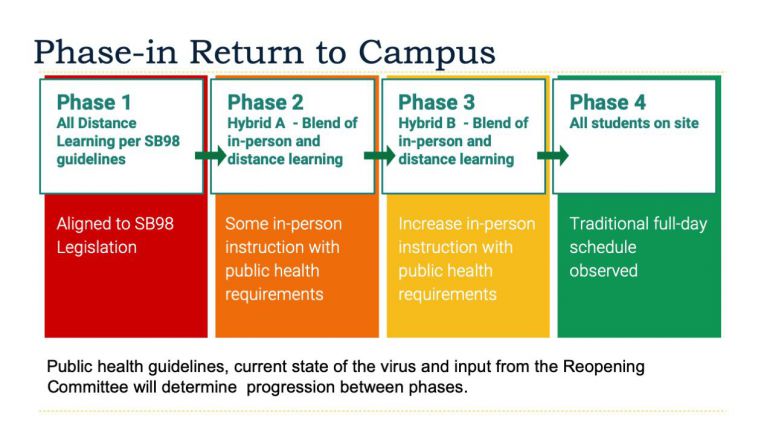Message from the Superintendent
Top priority: health and well-being of students, staff, and families while educating students to their highest potential.
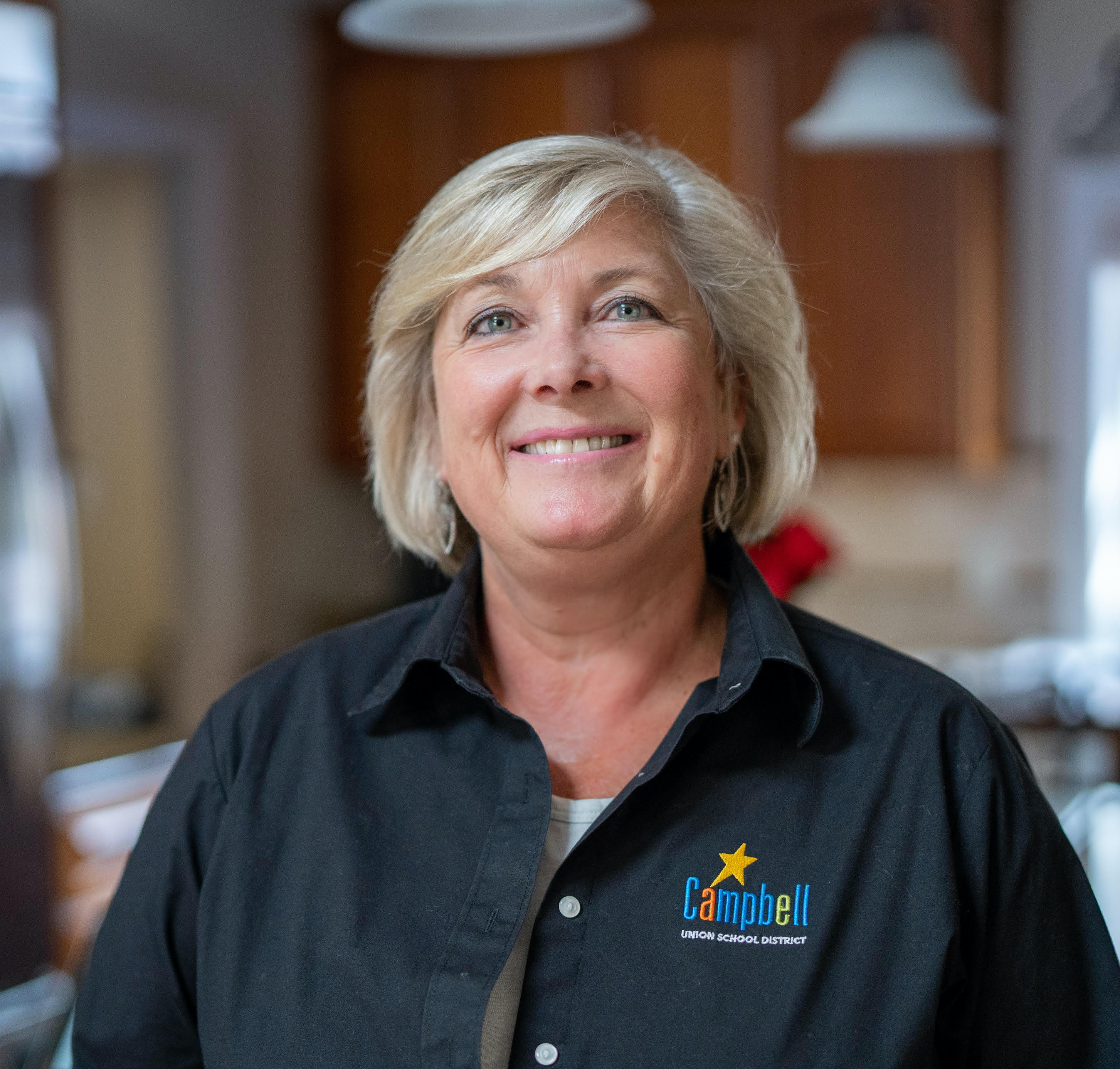 As we have learned throughout the many months of the COVID-19 pandemic, flexibility in response to new information continues to be essential. Since Campbell Union School District’s School Reopening Plan was published in July 2020, we have been monitoring COVID-19 pandemic information, adapting to mandatory safety requirements from the state and county public health departments, and communicating developments to our staff and community.
As we have learned throughout the many months of the COVID-19 pandemic, flexibility in response to new information continues to be essential. Since Campbell Union School District’s School Reopening Plan was published in July 2020, we have been monitoring COVID-19 pandemic information, adapting to mandatory safety requirements from the state and county public health departments, and communicating developments to our staff and community.
Our top priority continues to be the health and well-being of our students, staff, and families as we continue our work of educating students to their highest potential.
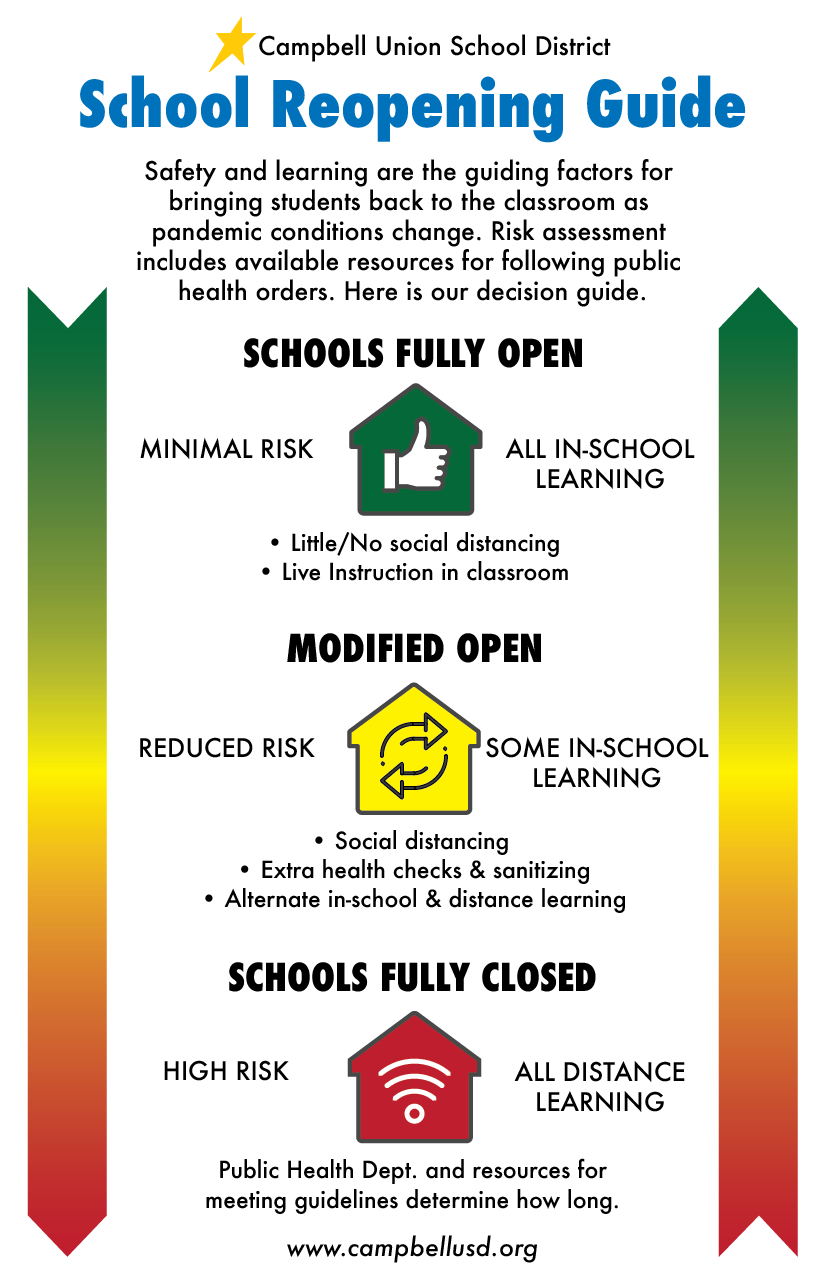
Among the state and regional guides for reopening schools are the Blueprint for a Safer Economy, the School Reopening Framework, the Guidance for Small Cohorts/Groups of Children and Youth, COVID-19 Prepared: Reopening Santa Clara County K-12 Schools for the 2020-2021 School Year, and CDPH’s consolidated guidance in the COVID-19 Reopening In-Person Instruction Framework & Public Health Guidance for K-12 School in California, 2020-2021 School Year.
Our District’s 2020-21 School Reopening Plan reflects those updates and allows us to be safe, nimble and responsive to local conditions of the pandemic. This plan addresses the wide-ranging needs of our students, staff and community with the information available at this time.
Much thought went into developing our plan. Our process included stakeholder feedback, study of legal requirements, research reviews, and collaboration with our teachers, parents, administrators, support staff and community partners. Through continued participation in district, state and regional committees, our administrators stay apprised of new developments and regulations related to slowing the spread of the virus, and on creating strategies for safely returning students and staff to in-person learning at school.
We are committed to returning as many students to in-person learning as is safely possible. We will apprise families and staff of any upcoming changes to allow time for planning and will house information and resources on our COVID-19 web page.
Dr. Shelly Viramontez, Superintendent
Campbell Union School District
2020-21 School Reopening Plan At a Glance
An overview of our 4-phase plan.
|
CONTENTS Reopening Plan at a Glance |
On July 15, 2020, the Campbell Union School District Governing Board approved the District Reopening Planning Committee’s recommendation to begin the 2020-21 school year with distance learning for all students and phase into more in-person learning as local conditions permit. The recommendation includes an option for year-round distance learning for families who prefer that for their children. This 2020-21 School Reopening Plan document provides details for implementing the recommendation, and includes the legal requirements, instructional programs, sample schedules, safety precautions, academic and social-emotional supports, and communication norms established for the year. A Phased-in Return to Campus Public health guidelines, current state of the virus and input from the Reopening Committee will determine progression between phases.
|
Summary of Updates - January 2021
In mid-January 2021, the California Department of Public Health (CDPH) issued an update to the Blueprint for a Safer Economy’s Reopening Framework, consolidating and clarifying the measures each county must meet for schools to reopen for in-person instruction.
Our School Reopening Plan already addressed the majority of these requirements, and we made appropriate operational adjustments as various state and county departments issued new directives.
This January 2021 update reflects the latest guidelines released from CA Dept of Public Health (CDPH) on January 14, 2021, and from the Santa Clara County Public Health Department.
- We updated our Health & Safety section to more closely reflect the CDPH changes.
- We completed and posted the two mandated components of the new COVID-19 Safety Plan:
• the CAL/OSHA Prevention Program Plan
• COVID-19 School Guidance Checklist.
- We made general updates to provide clarification and where proposed actions were completed.
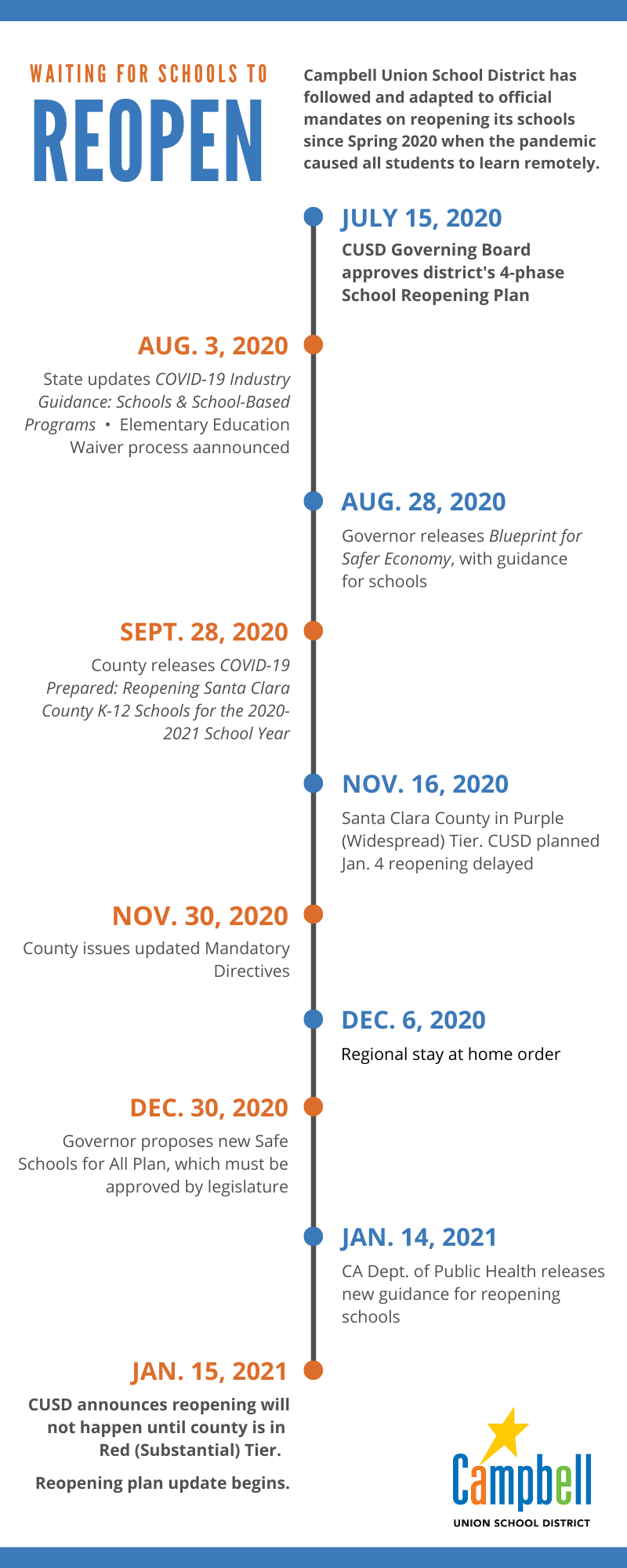
California Dept. of Public Health’s School Reopening Actions by Tier
As stated in the January 2021 update, Campbell Union School District will move to Phase Two of our Reopening Plan when Santa Clara County is in the Red Tier.
Table 1. School reopening actions for in-person instruction, by Tier
| Yellow CR <1.0* TP<2% |
Orange CR 1-3.9* TP 2-4.9% |
Red CR 4-7* TP 5-8% |
Purple CR >7-13.9* TP >8% |
|---|---|---|---|
|
- CSP posted publicly for K-12th grades 5 days prior to in-person instruction. |
- CSP posted publicly for K-12th grades 5 days prior to in-person instruction. |
- CSP posted publicly for K-12th grades 5 days prior to in-person instruction. Must be in Red 5 days prior to reopening. |
Already reopened: CSP posted publicly by 02/01/21. Not previously open:
|
The CDPH update states that once a county is in the Red Tier for at least 5 consecutive days,schools can reopen for in-person instruction. (Revised from prior 14-day requirement.) In the Red, Orange, and Yellow Tiers, schools may reopen for all grades.
Once Santa Clara County is in the Red Tier for 5 consecutive days, Campbell Union School District will initiate Phase Two of our Reopening Plan, gradually bringing students back to campus according to the schedules provided in each school’s reopening plan.
Our employee agreements and promise to families is to provide at least two weeks advance notice before students start in-person instruction. If the fifth day falls mid-week, Phase Two will begin on the Monday following that two-week period.*
Families will be notified in advance by phone and email of the date that their student may return to school.
(* Revised for clarification Feb. 25, 2021)
Phases for Reopening
Phase 1: All Grades Distance Learning
Under our 2020-21 Reopening Plan, all students started the year in distance learning. Our Distance Learning program differs from what we provided in spring: more engaging, academically rigorous, and in line with new legislative requirements.
The improvements include daily live interaction with teachers and peers for instruction, and content that aligns with standards and of similar quality as what students receive from in-person instruction.
Key features of the program include:
- Use of Zoom, SeeSaw and Google classroom as our main Instructional delivery methods.
- Parent education is provided to support learning at home.
- A weekly schedule of daily live teaching is provided for students/families from their child’s teacher.
- Student work is assessed and teacher feedback provided.
- Students are required to attend both large and small group virtual instruction.
- Students are assigned to small group instruction for additional support as needed.
- Staff is available during office hours for questions/concerns.
- Schedules are provided to allow some choice asynchronous learning.
- Devices are provided as needed.
Learning Mitigation Support:
Qualifying students may be invited to receive additional support on site during the school day as part of the legislative requirements for the Learning Loss Mitigation Funds, Special Education Learning Labs, or other targeted supports and services to students in high-needs subgroups as stated in the Blueprint for a Safer Economy and in the Safe Schools for All Plan.
Phases 2, 3 and 4: All Schools
In Phases 2 through 4, schools will gradually bring students back to campus, in limited groupings, for in-person instruction starting with the youngest grades and expanding to the upper grades. In these phases, instruction will be provided on a blended, or “hybrid”, schedule, with part of the day/week in remote learning and part on campus for live, in-person learning with the teacher.
Student schedules are determined by each school and its teachers. Each school provided its site-specific reopening plan to families in December 2020. They are available on each school's website, on the District's COVID19 Resources page, or by contacting your child’s school office.
Please note that plans do not show dates between phases due to the unpredictable nature of COVID-19 coronavirus, and because we cannot know the exact dates conditions will allow for transition to the next phase. Communication will go out at the beginning of each month that will provide dates, if available, for when transitions between phases will occur.
Where schedules and plans refer to “cohorts” of students, we mean a stable group of students who are meeting for in-person instruction, targeted support, and/or intervention services, under the direction of the district. In March 2021, the California Department of Public Health removed the limitation pertaining to the number of individuals in a cohort.
School Schedules
Sample schedules provided to schools
The District worked with individual schools to design their schedules. Elementary and middle school leadership teams used the sample schedules as a starting point on which to build site-specific schedules, modifying them as appropriate to incorporate input from school site teams. .jpg)
Student schedules are determined by each school and its teachers. Each school provided its site-specific reopening plan to families in December 2020. They are available on each school's website, on the District's COVID19 Resources page, or by contacting your child’s school office.
We are committed to establishing schedules, structures, practices, and clear expectations for successful student in-person learning to resume. Also, we are committed to—as much as possible—providing the same in-person schedule for families with children in different grades and schools.
Our schedules do not show dates between phases due to the unpredictable nature of the novel coronavirus, and because we cannot know the exact dates conditions will allow for transition to the next phase.
School-Year Distance Learning Program
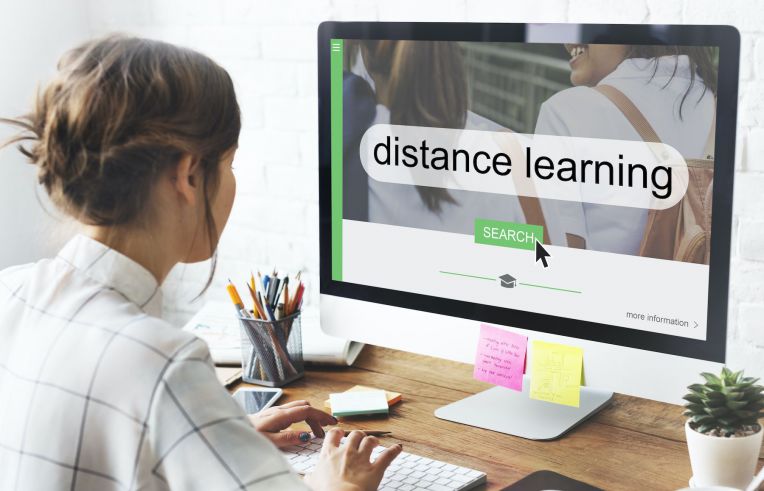
Some families opted to enroll their students in Distance Learning for the entire school year.
Choosing this option required the full school year commitment. Requests to change to in-person instruction are subject to our school transfer procedures.
Key points for this Distance Learning option:
- Students will have rights to return to their resident school the following year.
- The program will follow the model described on the following page.
- Parents were provided with the requirements and link for enrollment for the Distance Learning Program in August 2020.
- Enrollment will determine 2020-21 school year staffing needs
- The posting and application process will be used to determine staff assignments.
Student schedules have been determined by the school and teachers and provided to students and families.
Ensuring High Quality Teaching & Learning
Learning Continuity & Attendance Plan
Learning Continuity & Attendance Plan
As part of California’s accountability requirements, we must submitted a Board-approved plan addressing the following:
- How we will provide substantially similar instruction in Distance Learning.
- How we will ensure students have devices & connectivity.
- Live contacts and how we will ensure participation.
- Provision of Designated and Integrated ELD.
- Monitor and support for the Social-Emotional well being of students and staff.
- Re-engagement strategies for those who are not participating in DL.
- Providing meals for students who receive free/reduced.
- Improved services for Foster Youth, English Learners & Low SES.
Our plan went to the Board for review and approval in September 2020.
Special Education
.jpg) Our Special Education Subcommittee worked to revise procedures and develop options for providing services, assessments and accommodations for our students.
Our Special Education Subcommittee worked to revise procedures and develop options for providing services, assessments and accommodations for our students.
The subcommittee work includes:
- Examining Goals and Services of IEPs in order to ensure the unique needs of individual students are addressed by the case manager, teachers and support staff.
- Process for contacting and engaging families and students in determining recommendations for services in each of the phases, including holding IEP meetings to adjust program placement and services as necessary.
- Designing schedules to meet the needs of our students.
- Ensuring distance learning requirements will be met for students with IEPs, including General Education, support and other appropriate services to address students’ goals.
- Exploring platforms and strategies for effective collaboration between special and general education providers for meaningful inclusion.
- Providing a process for in-person assessments at all Phases.
- Providing professional development, systems and structures to support collaborative instructional and communication practices.
Health and Safety Operations
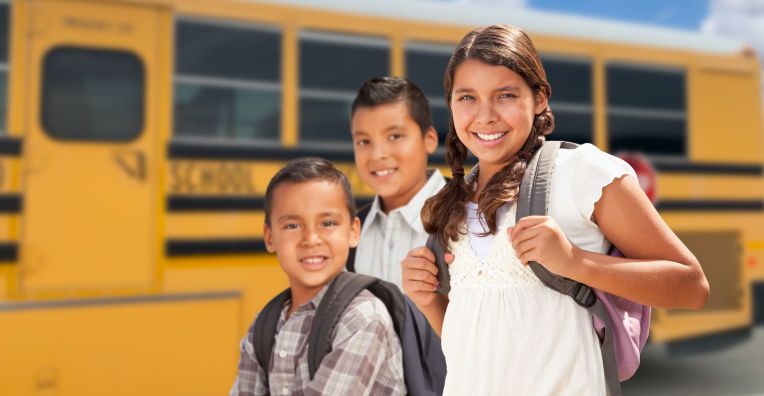 The following pages describe details for School Day Operations as of March 3, 2021, the date that Santa Clara County lifted local activity-specific health directives. All activities are still subject to the State’s rules and to the local Risk Reduction Order.
The following pages describe details for School Day Operations as of March 3, 2021, the date that Santa Clara County lifted local activity-specific health directives. All activities are still subject to the State’s rules and to the local Risk Reduction Order.
Information will be revised as needed to reflect changes in public health and other official mandates related to the COVID-19 pandemic.
To reduce transmission of the virus, we use a layering of mitigation strategies. Each strategy (face coverings, stable groups, distancing, ventilation, hand hygiene, etc.) decreases the risk of in-school transmission, and the combination of layers has been shown to be most effective in decreasing transmissions.
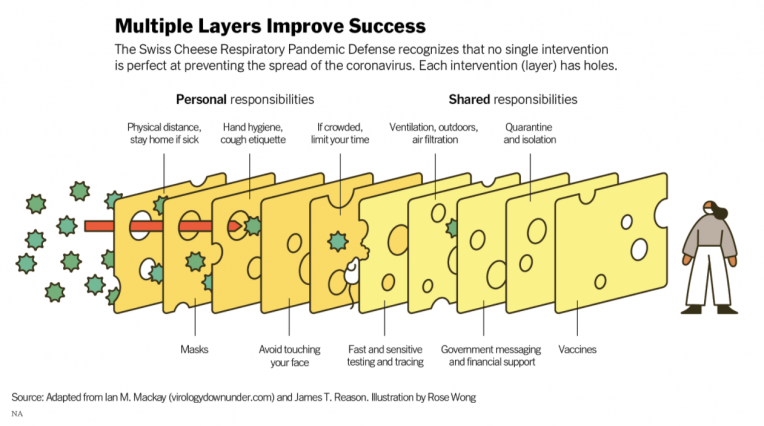
Screening for Symptoms
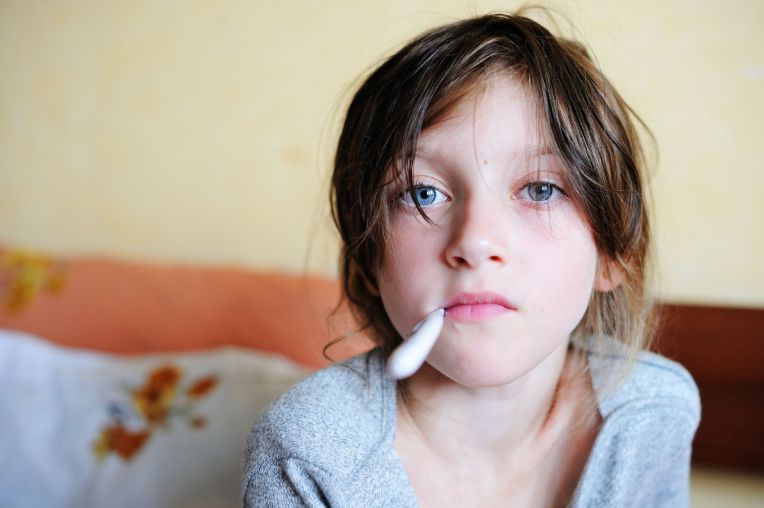
Daily screening for symptoms is one of several measures everyone must use to reduce the risk of spreading the new coronavirus.
- We provided parents with printed and video guides, and offered training as needed, on how to conduct the daily health screening prior to their child being brought to school or to the bus stop.
- Please note that, as of July 1, 2020, the Public Health Department advises that it is unreliable to use temperature to screen children for COVID-19. More details are in the Santa Clara County Public Health Department’s COVID-19 Prepared: Reopening Santa Clara County K-12 Schools for the 2020-2021 School Year.
- To prevent the spread of infection, students, teachers and other employees who have signs/symptoms of COVID-19 will be in compliance with the SCPHD requirements, such as stay home until they are symptom free, a negative test for COVID-19 or a note from the doctor or completed quarantine before the student or staff member is able to return.
- Our collaboration with the County Public Health Department regarding tracking and tracing will determine testing and returning to school, including those who have had an exposure to COVID-19.
- All staff have been trained on signs and symptoms of COVID-19, actions to take with each of four scenarios, and what to do if anyone develops symptoms during the school day.
- Students who exhibit symptoms of COVID-19 will be safely isolated until they are picked up. Employees exhibiting symptoms will be sent home.
- Remote learning will be available to children who need to stay home because they are sick or in isolation due to COVID-19 infection or exposure.
- Our school nurses have reviewed all student health plans to prepare health support for returning students.
- Symptomatic individuals who test positive for COVID-19 can return at least 10 days since symptoms first appeared AND at least 24 hours with no fever AND improvement in other symptoms.
- Asymptomatic individuals who test positive for SARS-CoV-2 may return to work or school 10 days after the date of their first positive test for SARS-CoV-2.
- Unless the local health department advises otherwise, it is not required to exclude asymptomatic contacts (students or staff) of the symptomatic individual from school until test results for the symptomatic individual are known.
Hand Hygiene
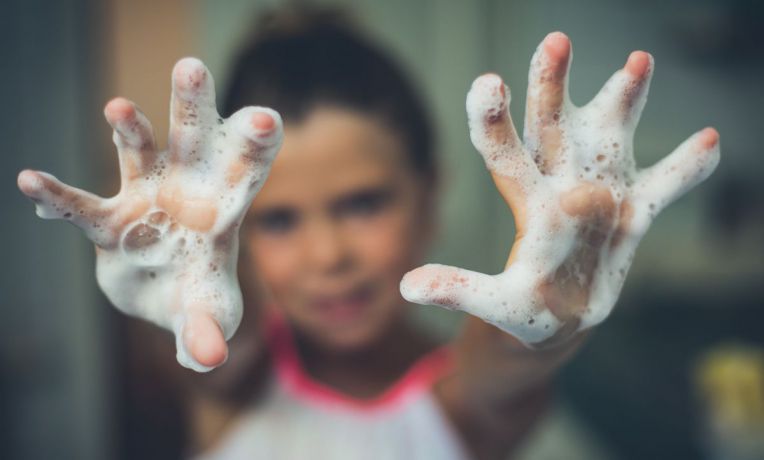 Hand hygiene is an effective strategy to prevent the spread of most respiratory viruses. Our staff will be teaching proper hand hygiene (soap and water or hand sanitizer) and scheduling routine, frequent hand-washing activities throughout the school day.
Hand hygiene is an effective strategy to prevent the spread of most respiratory viruses. Our staff will be teaching proper hand hygiene (soap and water or hand sanitizer) and scheduling routine, frequent hand-washing activities throughout the school day.
- We will use age-appropriate lessons to teach students how to clean their hands properly and to avoid touching their face, eyes, nose and mouth. Lessons and reminders with students will be consistent with our Positive Behavioral Interventions and Supports (PBIS) in which we teach the behavior, model it, and affirm and respond as necessary to achieve expected behavior.
- Students and staff will be taught about respiratory etiquette; students and staff who have symptoms of a respiratory tract infection will stay home. Everyone will be reminded to sneeze or cough into their elbow/sleeve or tissue, and to sanitize hands after a cough or sneeze.
- There will be age-appropriate signage placed throughout the school to remind students to wash or sanitize hands. Liquid soap and hand sanitizer will be replenished and paper towels available for drying. No-touch waste receptacles will be available for disposal of materials.
- All students will have access to hand sanitizer and/or sinks with soap throughout the day and will have frequent reminders to wash or sanitize their hands, specifically before and after eating and going outside to play.
- A regular schedule for routine hand hygiene will be in place for younger students with scheduled hand hygiene breaks. Our classrooms have sinks with soap dispensers, and we will make hand sanitizer available as necessary to augment hand washing. Hand sanitizer will be available at the entry point of each classroom.
Face Coverings
The current State guidelines require use of face coverings for all staff and students, unless exempt, for indoor environments, on school buses, and areas where physical distancing alone is not sufficient to prevent disease transmission.
- Face coverings are required for everyone upon arrival at the bus stop and school.
- All students will use face coverings provided from home.
- Students in all grade levels TK-8 are required to wear face coverings at all times, while at school, unless exempted.
- There may be individual exceptions for students with respiratory or other conditions where wearing a face covering is not feasible.
- Students not exempt from wearing face coverings and who refuse to wear one during in-person learning will be disciplined similar to any instance in which a student refuses to follow safety procedures, the student may be removed from the in-person learning option.
- A cloth face covering or face shield should be removed for meals, snacks, or when it needs to be replaced. When a cloth face covering is temporarily removed, it should be placed in a clean, safe area, until it needs to be put on again.
- Employees may use face coverings provided from home or a face covering with a clear face shield provided by CUSD, if available. Please refer to the Staff Safety Measures section for more details about face shields.
- Students will be taught the reason for and proper use of a face covering, procedures for putting on, taking off, and storing the face covering (i.e. during meal times, snack times).
- Each school will maintain a supply of non-medical masks in case a student or staff member does not have one and needs one for the day.
- Teachers and staff who are exempt from face coverings are those that require respiratory protection according to Cal/OSHA standards and staff who are unable to wear a face covering for medical reasons shall not be assigned duties that require close contact with students.
- Participants in youth and adult sports should wear face coverings when participating in the activity, even with heavy exertion as tolerated, both indoors and outdoors.
- The face covering guidance recognizes that there are some people who cannot wear a face covering for a number of different reasons. People are exempted from the requirement if they are under age 2, have a medical or mental health condition or disability that would impede them from properly wearing or handling a face covering, those with a communication disability, or when it would inhibit communication with a person who is hearing impaired. Those with communication disabilities or caregivers of those with communication disabilities can consider wearing a clear mask or cloth mask with a clear panel when appropriate.
- Persons exempted from wearing a face covering due to a medical condition, as confirmed by school district health team and therapists, must wear a non-restrictive alternative, such as a face shield with a drape on the bottom edge, as long as their condition permits it.
- See Public Health Department Guidance for K-12 Schools for details about face covering requirements for children and adults.
Ventilation
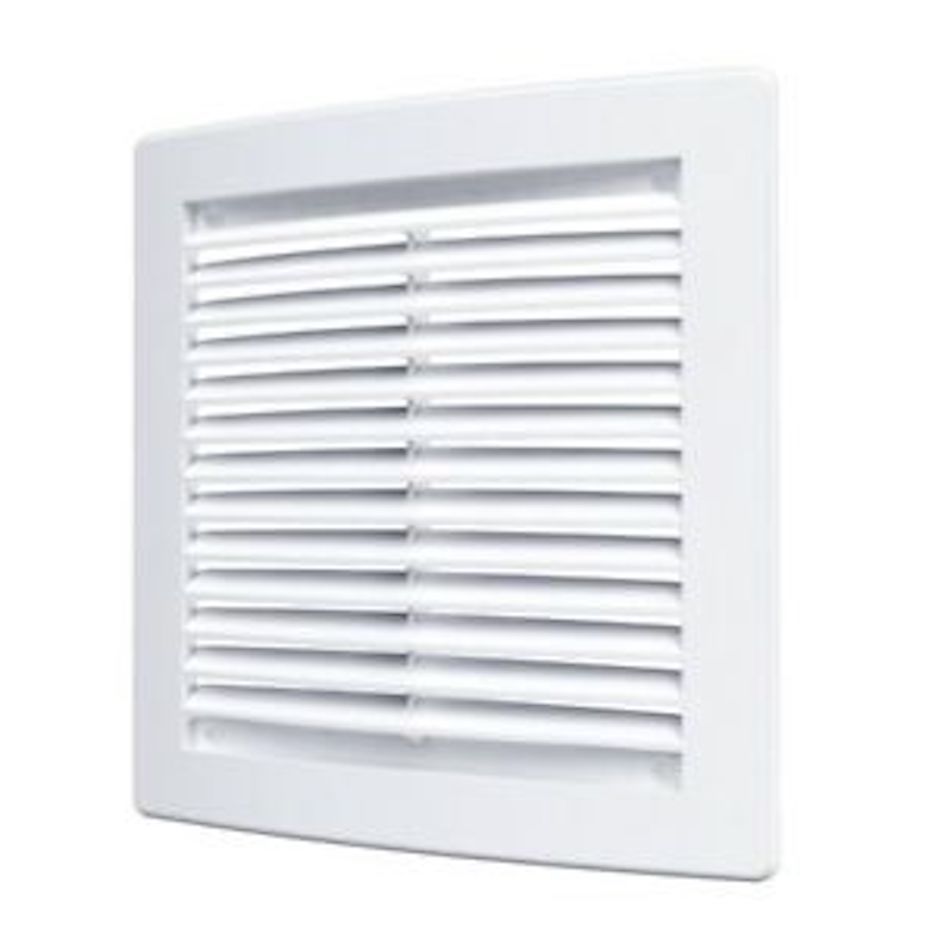 Properly installed and maintained Heating, Ventilation and Air Conditioner (HVAC) systems are the key to ensuring healthy indoor air quality in school learning environments. We will support healthy environmental conditions and airflow as follows.
Properly installed and maintained Heating, Ventilation and Air Conditioner (HVAC) systems are the key to ensuring healthy indoor air quality in school learning environments. We will support healthy environmental conditions and airflow as follows.
- All air filters in all rooms have been changed in preparation for when on-campus learning is allowed.
- HVAC systems will be set to operate at a minimum of one hour before and after planned occupancy. Thermostat programs will be set to allow circulation fans to bring additional fresh air into classrooms after heating or cooling needs have been met.
- Overwhelming majority of classrooms have their own individual unit that serves only that space. Classrooms that share a unit have been identified. Usage will be limited in order to maintain required safety protocols.
- High-efficiency air filters with a minimum efficiency reporting value (MERV) of 13 are installed and will be replaced quarterly.
- The use of outdoor space or environments with windows or other cross-ventilation options will be used as much as possible. The district has purchased over 100 canopies to support use of outdoor learning spaces.
Physical Distancing
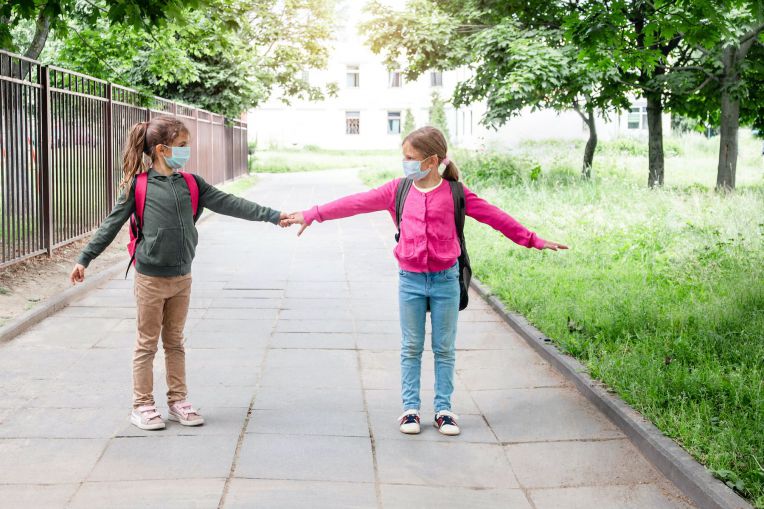 Through physical distancing and common cohorts (smaller groups of students who do not mix with other groups), we will reduce the likelihood of contracting the virus in school settings. This includes limiting people on campus to only students, instructors and service providers. Our plan for distancing is described here.
Through physical distancing and common cohorts (smaller groups of students who do not mix with other groups), we will reduce the likelihood of contracting the virus in school settings. This includes limiting people on campus to only students, instructors and service providers. Our plan for distancing is described here.
Schedules
Bell schedules will be adapted to streamline foot traffic and maintain practicable physical distancing during passing times and at the beginning and end of the school day and to minimize congregated movement through hallways as much as is practicable.
Classrooms
- When students are in the classroom, we will arrange the classroom furniture to leave as much space between students as required by the California Department of Public Health. Student desks will be spaced apart 3 feet or more, to the extent practicable, especially in middle school classrooms. Student chairs should also be spaced 3 feet apart, except if not possible after a good faith effort. For example, when students from A or B cohorts are seated in class, there would be an empty desk between them to facilitate physical distance. If 3 feet of distance is not possible, the school will optimize ventilation and use other separation techniques, such as partitions and arranging desks to minimize face-to-face contact. There will be no less than four feet between student chairs.
- Schools that are reopening for in-person instruction are not limited to 16 individuals in a cohort. That maximum cohort size applies only to limited instruction and specialized services offered under the State’s cohort guidance. The practical limit is the number of students that fit in a classroom while a school complies with the requirement regarding distance between desk chairs.
- When weather permits, teachers may conduct classes outside to promote both physical distancing and fresh air ventilation.
- Teacher and staff desks will be placed at least six feet away from students and other staff desks, to minimize the risk of adult-to-child disease transmission.
- Elective courses will be conducted in remote learning settings.
Cohorts
-
Santa Clara County Public Health still encourages youth/families to limit the number of cohorts in which youth participate, but it is no longer required for youth to only participate in one program or activity (in addition to their school cohort), as was the case when the County’s Directive for Programs Serving Children and Youth was in effect.
Large gatherings/assembly
- Large gatherings/assemblies will not take place in the foreseeable future.
- Singing, drama, band, sports, and similar practices/performances pose a higher level transmission risk. The District will adhere to Public Health Department guidelines and suspend these activities until public health orders permit. When they are allowed, we will give special consideration to room ventilation, use of outdoor space, and the distance between students. To the extent possible, students will not share instruments and athletic equipment or other objects, and if sharing is required, the objects will be disinfected between use.
Lunch breaks
- To minimize risk of group transmission and maintain physical distancing, we will stagger or modify break and lunch times at each school site.
- When weather permits, lunch or snack breaks will be held outside, to the extent possible.
- Hand hygiene will be performed before and after breakfast and lunch breaks.
Outdoor and other activities
- During general outdoor activities, such as recess, common cohorts need not practice physical distancing, but there must be additional distancing between cohorts.
- Students and adults will wear face coverings when participating in activities, even with heavy exertion as tolerated, both indoors and outdoors (unless the face covering could become a hazard), and face coverings must be worn when not participating in the activity as indicated in the CDPH Outdoor and Indoor Youth and Adult Recreational Guidance. .
- Students will be instructed to clean their hands before physical education activities, outdoor play and/or playground use. To the extent possible, they will not share equipment or other objects, and if sharing is required, the objects will be disinfected between use.
- Students will be instructed about following safety protocols on the playground.
- We will assign restrooms and schedules for bathrooms to allow common cohorts to avoid mixing with others.
- We will post signs and give reminders about proper protocols for hygiene and physical distancing.
- We will provide sports/after school programs only as social distancing and health requirements can be met and will follow the CDPH Outdoor and Indoor Youth and Adult Recreational Guidance.
- There will be special consideration about whether to re-start sports with a high-degree of physical contact (i.e. soccer, basketball and wrestling). For the present we will postpone or modify them. Sports equipment (e.g. balls, hockey sticks, etc.) will be cleaned at the conclusion of each activity.
- According to Santa Clara County Public Health Department’s Mandatory Directive on Programs Serving Children or Youth, youth sports and physical education are permitted only when the following can be maintained:
- physical distancing of at least six feet between participants; and
- there is no practice or competition involving another stable group;
- no coordinating or engaging in travel outside of the county;
- no participating in athletic or recreational activities within the county with individuals who have traveled from outside of the county and are not members of the program’s stable group.
- Activities should take place outside to the maximum extent practicable.
- Players may participate in only one cohort at a time and may not move from one cohort to another more than once every three weeks.
- Outdoor and indoor sporting events, assemblies, and other activities that require close For example, tournaments, events, or competitions, regardless of whether teams are from the same school or from different schools, counties, or states will not be permitted until guidelines allow.
To limit risk of transmission during arrival and departure of students traveling to school by foot, bicycle, or other means of active transportation, we will:
-
Use as many entrances and exits as can be supervised appropriately to decrease crowding at entry and exit points, and designate routes for their use.
-
Instruct drivers to remain in their vehicles, to the extent possible, when dropping off or picking up students. Only one parent or caregiver should come to the building when in-person student drop-off or pick-up is needed.
-
Mark spaces six feet apart for adults waiting outside to drop off or pick up students on foot, by bicycle, or other means of active transportation.
-
Provide supervision to disperse student gatherings during school arrival and departure.
Cohorts
.jpg) Establishing cohorts aims to create common groups, limit the mixing of students and staff, and reduce the number of people at risk of viral exposure.
Establishing cohorts aims to create common groups, limit the mixing of students and staff, and reduce the number of people at risk of viral exposure.
A cohort is a stable group of students who are meeting for in-person instruction, targeted support and/or intervention services, under the direction of the district.
According to Public Health guidelines issued March 22, 2021, limits to group sizes (up to 14 students and 2 staff members) only apply when the county is in the Purple Tier.
Elementary school students can be placed into stable groups that stay together all day with their core teacher (and any aide or student teacher who is present). If there are counselors or teachers of electives, they will ideally be assigned to only one group or conduct their classes/counseling virtually.
To create and maintain stable cohorts, we will:
- Initially size a cohort to be about half of the class, except for those classes that have small numbers below 15. Each class will have an A/B cohort.
- Assign elementary students to one classroom as a stable cohort which will enable each group of students to work consistently together with little or no mingling with other cohorts on campus.
Because middle school curricula differ from elementary school curricula, teachers are not usually assigned to one stable group of students, creating an opportunity for mixing across stable groups or students. CUSD middle schools will create stable groups by modifying middle school students’ schedules to reduce the total number of class or cohort changes per day. Campuses will focus on physical distancing throughout the in-person instructional day.
Cleaning and Disinfecting
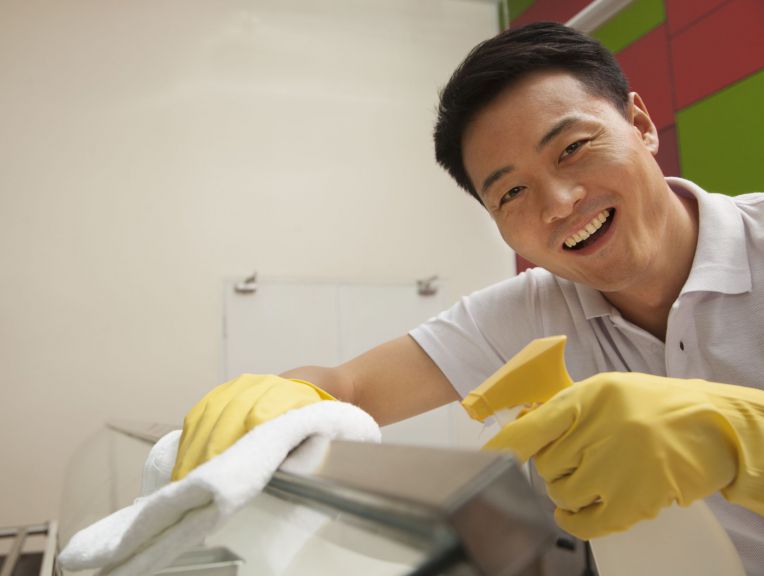 “Cleaning” involves water and soap or a detergent, does not use disinfecting agents, and significantly decreases germs on surfaces and decreases infectious risks. “Disinfection” kills germs on surfaces using specific agents (see below for those approved for use). If a case has been identified, the spaces where the case spent a large proportion of their time (e.g., classroom, or administrator’s office if an administrator) will be disinfected.
“Cleaning” involves water and soap or a detergent, does not use disinfecting agents, and significantly decreases germs on surfaces and decreases infectious risks. “Disinfection” kills germs on surfaces using specific agents (see below for those approved for use). If a case has been identified, the spaces where the case spent a large proportion of their time (e.g., classroom, or administrator’s office if an administrator) will be disinfected.
Frequent disinfection can pose a health risk to children and students due to the strong chemicals often used and so is not recommended in the school setting unless a case has been identified.
To properly disinfect a surface, it must first be clear of spills or debris. The District uses greener products for cleaning and disinfecting, and only appropriately trained staff are permitted to use disinfectants in the school setting. Staff will keep disinfecting products away from students.
To facilitate the custodial staff’s disinfecting process, students and staff may be asked to regularly wipe down some high-touch surfaces, such as desks and shared objects. Each classroom and workspace will have access to paper towels and spray bottles of non-toxic cleaning solution.
We will teach students to avoid sharing objects and will focus on hand hygiene with regular breaks.
We will implement a schedule for cleaning high-touch surfaces.
- Staff will clean frequently-touched surfaces at school and on school buses daily.
- Buses will be thoroughly cleaned daily and after transporting any individual who is exhibiting symptoms of COVID-19. Drivers should be provided cleaning materials, to support cleaning of frequently touched surfaces during the day.
- Frequently touched surfaces in the school include, but are not limited to:
- Sink handles.
- Shared tables, desks, or chairs.
- If a school has morning and afternoon stable groups, the desks and tables are considered shared and should be cleaned before the next group arrives.
- Desks or chairs do not need daily cleaning if only used by one individual during the day.
- Door handles.
- Shared technology and supplies.
- If used, outdoor playgrounds/natural play areas only need routine maintenance. Make sure that children wash or sanitize their hands before and after using these spaces. When hand hygiene is emphasized, cleaning of outdoor structures play is not required between cohorts.
Transportation
.jpg) Under Federal law, qualifying students with unique needs are a priority for transportation service, and State and local officials have issued physical distancing requirements to reduce the spread of COVID-19. Therefore, home-to-school transportation will be severely limited to only those students we are legally required to transport.
Under Federal law, qualifying students with unique needs are a priority for transportation service, and State and local officials have issued physical distancing requirements to reduce the spread of COVID-19. Therefore, home-to-school transportation will be severely limited to only those students we are legally required to transport.
CUSD will continue monitoring resources and may be able to resume some home-to-school transport as conditions improve.
Please note the following guidelines for bus/van transportation by bus, van or other vehicles owned by CUSD:
- Parents will need to screen their own children for symptoms of illness before the child boards the bus or van. Drivers will have authority to refuse boarding to any student demonstrating symptoms.
- Operational adjustments will occur, as needed.
- Students need to be escorted to the bus or van by an adult. We will reduce the seating capacity on our buses, and use a seating chart and physical markers to designate which seats are available for use. Students will be asked to observe physical distancing at bus stops and school loading and unloading zones.
- Students, parents, and employees will wear face coverings while on the bus or van and while waiting at bus stops.
- As much as possible, students from the same cohort or family will be seated together.
- Improved ventilation (e.g. keeping windows open, weather permitting) and enhanced disinfecting protocols will be followed.
- To prevent students from walking past each other, we will assign students to seats in the order of back to front of the bus on the morning routes, and in the order of drop off students on afternoon routes.
Please note the following guidelines for students traveling to/from school via carpool:
- Students and staff should only carpool with members of their stable cohort, wear a face covering while carpooling, and open windows during carpooling.
Student Nutrition
 Studies show that students perform best academically when well-nourished. Ensuring every child has access to healthy meals at school is important.
Studies show that students perform best academically when well-nourished. Ensuring every child has access to healthy meals at school is important.
To reduce the spread of the coronavirus, we are making the following adjustments:
- Menus will continue to follow the National School Lunch and Breakfast Program guidelines.
- Workers or other persons handling or serving food will use gloves in addition to face coverings.
- All meals are free for all students for the remainder of the 2020-2021 school year.
- To allow for adequate physical distancing, meals may be served and consumed in the classroom, cafeteria/multi-purpose room, or outdoors.
- While students are eating in the cafeteria and/or outdoors, schools will maintain stable cohorts by:
- assigning students to specific areas,
- staggering meal times to allow for cleaning between meal services and to maintain smaller groups of students,
- ensure distance between cohort groups,
- limit the number of students at lunch at one time.
- Fresh, healthy meals will be pre-assembled by the Child Nutrition Staff. We will give students their pre-assembled meal at a point of service.
- Use of shared tables and self-service salad bars will be suspended to decrease transmission risk.
- Meal times will be staggered to allow for cleaning between meal services and to maintain smaller groups of students for social distancing.
- Any child 18 years of age or younger can receive free meals at our meal distribution sites. They do not need to be enrolled in our district. The student does not need to be present at pick up, and we do not need their name. Distribution schedule and locations are available on our COVID-19 web page and from your child’s school.
Mental Health
 A proactive approach is important to decrease the mental health impact for students related to the sudden school closure, sheltering-in-place, and resuming or reopening schools caused by responding to the pandemic.
A proactive approach is important to decrease the mental health impact for students related to the sudden school closure, sheltering-in-place, and resuming or reopening schools caused by responding to the pandemic.
To address sources of distress and create a welcoming learning community, we will:
- Incorporate lessons specific to supporting and developing social and emotional wellbeing.
- Seek to provide early identification and intervention of learning gaps that may have occurred during school closures.
- Provide onsite and/or telehealth individual counseling services or family coaching.
- Provide staff professional development on topics such as suicide prevention, social-emotional learning, and trauma informed practices.
- Adapt mental health support services provided by partner agencies for groups or individual students, as needed.
- Provide families with opportunities to engage and participate in trainings that will support their own social emotional well being and their student’s
- Encourage and share with students how to seek support with a staff member when needed.
- Share local mental health resources with students and families to access during non-school hours.
Staff Safety Measures
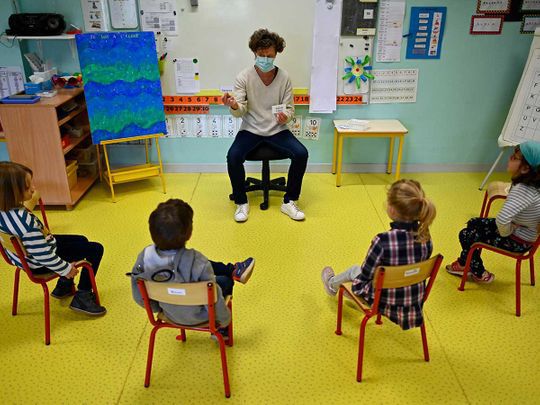
The safety of the school staff is an essential consideration. Efforts to mitigate risks for teachers and other staff will be similar to those recommended for other public settings.
- We will practice physical distancing of school staff from children and other staff, to the extent possible.
- All personnel must wear face masks in accordance with CDPH guidelines unless Cal / OSHA regulations require respiratory protection.
- If an employee or student forgets to bring the mask, the District will provide it. Supervisors will ensure that masks and PPE are used properly.
- The District will provide clear shields and instructions for proper use. These can be important for teaching, since facial expressions are an important part of communication, especially for phonological instruction.
- Face shields are not recommended as a replacement for face shields. In limited situations where a mask cannot be used for pedagogical or developmental reasons (for example, to communicate or help young children or children with special needs), a face shield (per CDPH guidelines) can be used instead wear a mask while in the classroom, provided the user maintains a physical distance from others. Staff must reuse a mask once outside the classroom.
- Teachers will be instructed on the safe and proper way to use clear face shields.
- Instructions and training in how to implement COVID-19 safety measures will be provided to staff upon the start of the year and periodically throughout the year, as needed.
- Staff break rooms/meals: Eating or gathering in any indoor spaces, such as break rooms and offices, is not allowed. We encourage staff to eat meals outdoors or in large, well-ventilated spaces. Schools will limit the number of staff who can be in the break room at a given time (particularly rooms that are small) to allow for physical distancing.
- Staff must maintain a 6-foot distance from any volunteers or visitors on campus.
- Staff providing special education and related services and rotating into general education classrooms for a portion of the day must maintain at least 6 feet of distance from everyone else in the cohort; that substitute teachers must maintain at least 6 feet of distance from everyone else in the cohort; and that schools should minimize the number of close contacts for students with disabilities and staff working with such students, whether they are rotating into a general education classroom or joining another cohort for special education services.
- Workers or others who handle or serve food will wear gloves in addition to face masks.
- We will maintain communication systems that allow staff and families to self-report symptoms and receive prompt notifications of exposures, exclusions, and closures, while maintaining confidentiality, as required by FERPA 31 and state law regarding privacy of educational records. You can find additional guidance here.
COVID-19 Testing and Exposure Procedures
CUSD provides monthly COVID-19 testing to its employees and plans to increase it to twice per month for those employees who provide in-person instruction. Testing for individuals with symptoms will follow the CDPH testing cadence recommendation below.
The district is exploring means for testing students.
Table 2. Suggested Testing Cadences with Support from the State of California for K-12 schools
| Yellow CR <1.0* TP<2% |
Orange CR 1-3.9* TP 2-4.9% |
Red |
Purple CR >7-13.9* TP >8% |
CR >14* | |
|---|---|---|---|---|---|
| Staff |
Symptomatic and response testing. |
Symptomatic and response testing. |
Symptomatic and response testing + every 2 weeks asymptomatic testing. † |
Symptomatic and response testing + every 2 weeks asymptomatic testing. |
Symptomatic and response testing + weekly asymptomatic (PCR or twice weekly antigen testing)**. |
| Students K-12 |
Symptomatic and response testing. |
Symptomatic and response testing. |
Symptomatic and response testing + every 2 weeks asymptomatic testing. † |
Symptomatic and response testing + every 2 weeks asymptomatic testing. |
Symptomatic and response testing + weekly asymptomatic (PCR or twice weekly antigen testing)**. |
TP = test positivity
* The case rates above are adjusted case rates.
** Weekly asymptomatic testing assumes the use of a PCR test. If antigen testing is used, testing should be at a twice weekly cadence.
Students or staff who have tested positive for active infection with SARS-CoV-2 virus within the last 90 days are exempt from asymptomatic testing.
Any school currently open is subject to the minimum testing requirement standards established by Cal/OSHA. These standards include response testing for exposed cases and outbreak testing for everyone weekly until no longer considered an outbreak. Please refer to Cal/OSHA guidance for complete details.
† Recommended. District is exploring this option
Confirmed or Suspected Cases of COVID-19 in a School
CUSD and each school is committed to communicating with specific populations that may be affected by any known or suspected infection. We will take the measures in Table 2 below when a student, teacher or staff member has symptoms, is a contact of someone infected, or is diagnosed with COVID-19.
The school nurse for each school will serve as the designee for virus tracking and tracing. As indicated in the table, we will send notifications through our normal channels: phone, email and/or online—as appropriate to the situation and with regard for protecting student and family privacy. We will follow all protocols for disinfecting, notification, and possible quarantine, as determined by the Public Health Department. Please refer to the section COVID-19 Testing and Exposure for more details.
Table 3. Actions to take is there is a confirmed or suspected case of COVID-19 in a school
| Student or Staff with: | Action | Communication with school community | |
|---|---|---|---|
| 1 | COVID-19 symptoms (e.g., fever, cough, loss of taste or smell, difficulty breathing) Symptom screening: per CDC Symptom of COVID-19. |
|
• No action needed. |
| 2 | Close contact (†) with a confirmed COVID-19 case. |
|
• Consider school community notification of a known exposure. No action needed if exposure did not happen in school setting. |
| 3 | Confirmed COVID- 19 case infection. |
|
|
| 4 |
Symptomatic person tests negative or a healthcare provider has provided documentation that the symptoms are typical of their underlying chronic condition. |
|
• Consider school community notification if prior awareness of testing. |
(†) A contact is defined as a person who is within 6 feet from a case for more than 15 minutes cumulative within a 24-hour period, regardless of face coverings. In some school situations, it may be difficult to determine whether individuals have met this criterion and an entire stable group, classroom, or other group may need to be considered exposed, particularly if people have spent time together indoors.
(††) See Stable Group Guidance for definition of a stable group. In some situations, (e.g., when seating charts are used, face covering is well adhered to, and teachers or staff have observed students adequately throughout the day), contact tracing and investigation may be able to determine more precisely whether each stable group member has been exposed. In this situation, those who were not close contacts could continue with in-person instruction.
A school with confirmed cases and even a small cluster of COVID-19 cases can remain open for in-person education as long as contact tracing identifies all school contacts for exclusion and testing in a timely manner, any small cluster is investigated and controlled rapidly, and the local health department (LHD) confirms that the school can remain open.
Exposure Notices
CUSD and each school is committed to communicating with specific populations that may be affected by any known infection.
We will send notifications through our normal channels: phone, email and/or online—as appropriate to the situation. We will follow County Public Health Department notification guidelines, which include protections for student and family privacy.
We will follow all protocols for disinfecting, notification, and possible quarantine, as determined by the Public Health Department.
Investigating a COVID-19 Cluster or Outbreak
When either a school or local health department (LDH) is aware that an outbreak may be underway, the LHD will investigate, in collaboration with the school, to determine whether these cases had a common exposure at school (e.g., a common class or staff member, bus ride, or other common exposures outside of school). CDPH defines a school outbreak as 3 or more confirmed or probable cases of staff or students occurring within a 14-day period who are epidemiologically linked in the school, are from different households and are not contacts of each other in any other investigation cases (e.g., transmission likely occurred in the school setting). The objectives of a school outbreak investigation are to identify and isolate all cases and to identify, quarantine, and test contacts to prevent further transmission of COVID-19 at the school.
School Closure Determinations
What are the criteria for closing a school to in-person learning?
Individual school closure, in which all students and staff are not on campus, is recommended based on the number of cases and stable groups impacted, which suggest that active in-school transmission is occurring. Closure should be done in consultation with the local health official (LHO).
Situations that may indicate the need for school closure:
- Within a 14-day period, an outbreak has occurred in 25% or more stable groups in the school.
- Within a 14-day period, at least three outbreaks have occurred in the school AND more than 5% of the school population is infected.
- The LHO may also determine school closure is warranted for other reasons, including results from public health investigation or other local epidemiological data.
Length of closure: 14 days, or according to a decision made in consultation with the local health official (LHO).
The State Safe Schools for All Technical Assistance teams (TA teams), composed of experts across multiple state agencies, will be available to assist schools with disease investigation for those with outbreaks that cannot find resources to investigate the outbreaks. The TA teams will also be available to help schools that close in order to identify and address any remediable safety issues.
If a school is closed, when may it reopen?
Schools may typically reopen after 14 days and if the following have occurred:
- Cleaning and disinfection
- Public health investigation
- Consultation with the LHD
What are the criteria for closing a school district?
A school district should close if 25% or more of schools in a district have closed due to COVID-19 within a 14-day period and in consultation with the Local Health Department (LHD).
If a District/Lead Education Agency (LEA) is closed, when may it reopen?
LEAs may typically reopen after 14 days, in consultation with the LHD.
Vaccines for K-12 Schools
CDPH strongly recommends that all persons eligible to receive COVID-19 vaccines receive them at the first opportunity. Currently, people under 16 are not eligible for the vaccine since trials for that group are still underway.
In addition to vaccines required for school entry, CDPH strongly recommends that all students and staff be immunized each autumn against influenza unless contraindicated by personal medical conditions, to help:
- Protect the school community.
- Reduce demands on health care facilities.
- Decrease illnesses that cannot be readily distinguished from COVID- 19 and would therefore trigger extensive measures from the school and public health authorities.
Because vaccine implementation for schools is rapidly evolving, we are providing a separate vaccine guidance document that will be available on the Safe Schools for All Hub here.
Child Care for Staff and Families
.jpg)
The district recognizes that families may need childcare even as students participate in distance learning. In accordance with all Public Health Department requirements, we have been able to provide childcare and small-group targeted instruction at many of our school sites
Registration is open to all CUSD-enrolled families through our Expanded Learning Department.
The number of sites offering this program will be determined by enrollment.
Communication: Engaging Families and Staff
Stakeholder Input on Reopening Plans
During the spring and summer of 2020, as part of its planning for reopening, Campbell Union School District (CUSD) conducted surveys of its employees, students and families, presented information at public Board meetings, and published updates in its weekly digital newsletters. On July 29, 2020, CUSD held a virtual community meeting where more than 900 employees and members of the public were provided an overview of the School Reopening Plan and given the opportunity to provide comments.
Since the pandemic began, we have had multiple formal and informal communications with employees and their respective labor groups in order to garner input, reach agreements, and keep them apprised of new developments. We will continue to do so going forward.
CUSD Governing Board meetings, which occur approximately every three weeks, include a report from the Superintendent on the status of implementation and new developments. Members of the public provide comments at these meetings and through surveys, email, parent meetings, and telephone calls.
Throughout the year, school administrators provide clear, age-appropriate information about COVID-19 to students, staff and parents/caregivers, as well as regular updates to their school communities using our weekly digital newsletters, mass notification system (SchoolMessenger) videos on youtube, and social media outlets, as appropriate
Welcoming Students to the 2020-21 School Year
The 2020-21 school year started August 24th with all students in distance learning, Phase 1 of our Reopening Plan. In the weeks prior, the school and district sent information to families about new student orientation, teacher assignment and more. There were virtual orientation opportunities for students to meet their new teachers and each other in small groups. Students who were new to our schools were provided a schedule to check out equipment needed for distance learning and to meet school staff.
Planning Process
The steps taken to develop a safe and flexible reopening plan
Overview of the Planning Process
With safety and students foremost in mind, we aligned our planning goals to meet our mission of educating students to their highest potential. 
We developed a set of guiding principles and created District workgroups to plan for three distinct scenarios.
- All Distance Learning (DL)
- Hybrid (Blend of DL and in-Person)
- All Students Back
These workgroups researched state and local mandates as information became available and concentrated efforts on facilities preparation, operations, technology needs, instructional plans and governance requirements.
Through a Design Thinking Challenge, teams of school teachers and staff submitted ideas for scheduling a Hybrid model for instruction. These provided the basis for several later versions and the final samples found in this plan.
From late-April and mid-June 2020, we conducted multiple surveys of staff, students and families to identify needs, for feedback on which scenario they desired, and what improvements to consider. The following themes emerged and are addressed in the reopening plan:
- Adherence to health and safety requirements
- Quality of distance learning
- More live interaction for students with teachers/peers
With this knowledge, we formed a District Fall Reopening Committee comprising many stakeholder groups: parents, teachers, administrators and labor union representatives.
We Aligned Our Goals to the Mission
Diagram of aligning reopening goals to district mission
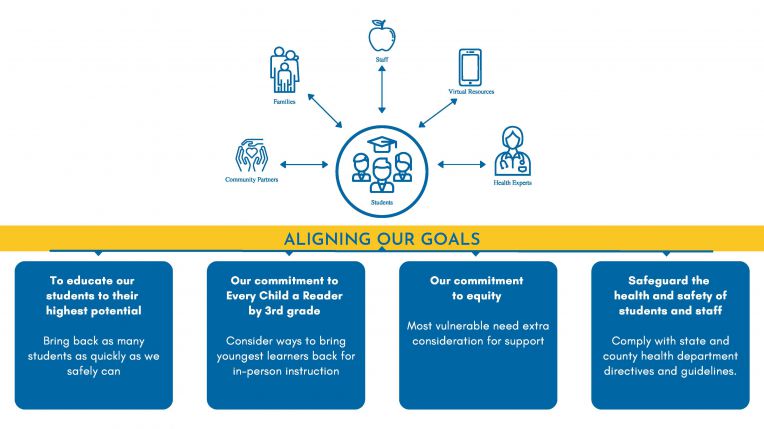
We Developed Guiding Principles
 The health and safety of students and staff are our top priority.
The health and safety of students and staff are our top priority. - We will engage and collaborate with our partners during all phases of re-entry planning, and implementation.
- We will support teachers across all grade levels and courses to concentrate their instruction so every student masters essential standards.
- We will assess student learning to ensure that students are progressing and engaged, and we will keep both the students and their parents/families informed of student progress.
- We will support the physical and mental well-being of students, integrating social-emotional learning into our academic core.
- We will support the social and emotional needs of our staff members, and we will provide them with time and support they will need for professional learning, reflection, and collaboration.
- We will sustain effective services for our students with special and exceptional needs.
- We will work to ensure students are meaningfully participating and take immediate action to support students struggling to stay connected.
- We will actively support parents/families as they engage in their students' education and learning.
- We will actively support effective governance systems that maximize engagement, public safety, and instructional innovation.
- We will rise to meet this moment and we will come back stronger together.
Planned a Safe Return to School
Our District workgroups researched and addressed Public Health Department requirements.
- Facilities - Safety protocols and social distancing
- Technology - Providing devices and support needed for distance learning
- Operations - Processes for staff, various programs, e.g. attendance, sports, etc.
- Teaching and Learning - Professional development (PD) needs, assessments, Multi-Tiered Systems of Support, Social Emotional Learning, plans for hybrid instruction, how to enhance engagement in various instructional models
- Governance - Communication, protocols, implement safety protocols
We also collaborated with education and public health groups to stay informed of changing conditions and regulations and to identify resources for meeting them.
- Public Health Department (PHD)
- Santa Clara County Superintendents Association
- Association of California School Administrators (ACSA)
- California School Boards Association (CSBA)
- Seeking flexibility and waivers
- Additional funding to implement safety requirements
- CUSD labor leaders
- Community partners and counseling services
Added the New Distance Learning Requirements
New legislation set requirements for distance learning
Public health orders, Executive Orders from the Governor, Education Code, and SB98 legislation attached to the State Budget adoption include the following requirements for distance learning:
- As much in-person instruction as practicable
- Confirm/Provide access to connectivity and devices to all students
- Content of same quality as in-person instruction; aligned to standards
- Academic supports for specific pupil groups
- Special Ed. services
- Designated and integrated ELD
- Daily live interaction with teachers and peers for purposes of instruction
- Progress monitoring
- Daily Instructional Minutes
- TK/K: 180 Minutes/day
- 1-3: 230 Minutes/day
- 4-8 240 Minutes /day
- Meals for all eligible for Free/Reduced Price Meals
- Weekly engagement record documenting synchronous/asynchronous instruction
- Evidence of participation in online activities
- Track completion of assignments
- Daily contact with student or parents

Incorporated New Public Health Guidance
Age-related continuum for determining priority of stable cohorts vs physical distance/face coverings
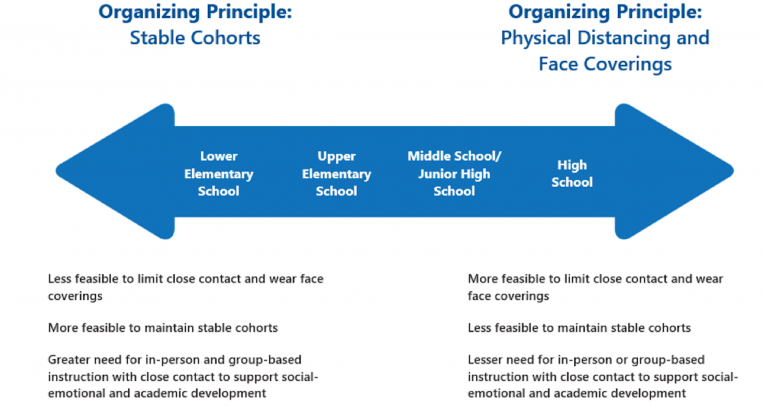
Learn More about the Reopening Plan
.jpg)
Our COVID-19 web page includes the original and the updated version, Board presentations, resources, and answers to frequently asked questions. The information is organized chronologically with the most current being first.
Subscribe to the district’s and your school’s weekly e-newsletter for updates.
Check your email for monthly messages about dates when transitions between phases may occur.
Email the district: contact@campbellusd.org
Special Thanks to District Reopening Planning Committee
|
|
|
|---|
Campbell Union School District
Governing Board
Pablo A. Beltran, Danielle M.S. Cohen, Chris Miller, Richard H. Nguyen, Michael L. Snyder
Dr. Shelly Viramontez, Superintendent
Published 07/24/2020
Updated to align with State, County and District requirements issued August 2020, September 2020, December 2020, January 2021, February 2021
